The Charles W. Morgan at the Mystic Seaport Museum
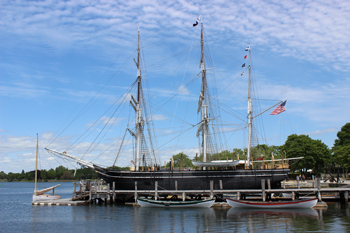
The Charles W. Morgan at the Mystic Seaport Museum, Mystic, Connecticut in June 2015.
The C.W. Morgan was built and launched at a New Bedford Massachusetts shipyard in 1841. It is America’s oldest commercial ship still afloat and the oldest wooden whale ship in the world. It is 106 feet 11 inches on deck, carried 7,134 square feet of sail and a crew of 35.
It was built for durability, not speed. The Morgan was active for 80 years and made 37 voyages, most 3 years or more. A complete restoration was done in 2008 at the Mystic Seaport Museum.
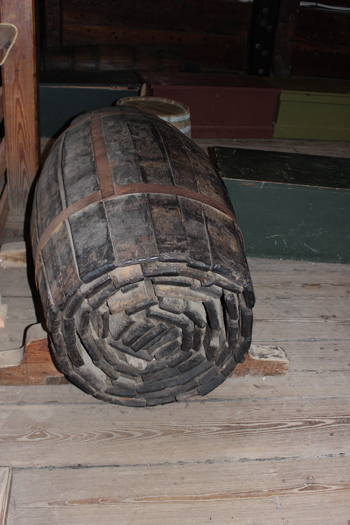
Oil barrel staves baled and stored to conserve space until filled with whale oil.
Whaling began in the American colonies off Nantucket in the early 1600s. As demand grew for whale oil used in lamps and lubricants whale ships had to travel further to find these long lived mammals. By the 1800s Nantucket was a major whale oil port. Ships were then sailing around the Horn to hunt whales in the mid Pacific Ocean.
The declining number of whales segued into the first drilled oil well in Pennsylvania in 1859. Petroleum did not replace the lighting and lubricating qualities of whale oil. Whale oil was an additive in automotive automatic transmissions until the 1950s.
Petroleum did become the abundant fuel and lubricant of the industrial revolution.
Although petroleum marginalized the whale oil industry, at the same time the petroleum industry would become more responsible for declining whale populations. Petroleum was used to power more powerful and faster ships. The noise from these ships and seismic testing during oil exploration has interfered with the whales’ sonar guidance. Plastics, petroleum based chemicals and ocean acidity continue to make survival more difficult for whales.
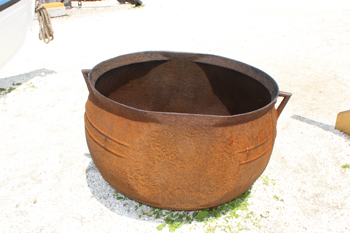
A 4-foot rendering kettle used to extract oil from slabs of whale blubber.
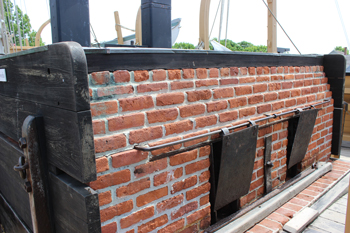
The rendering stove heated with wood, amidship on the C.W. Morgan.
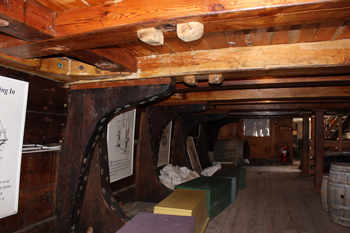
Below deck where barrels of oil were stored.
